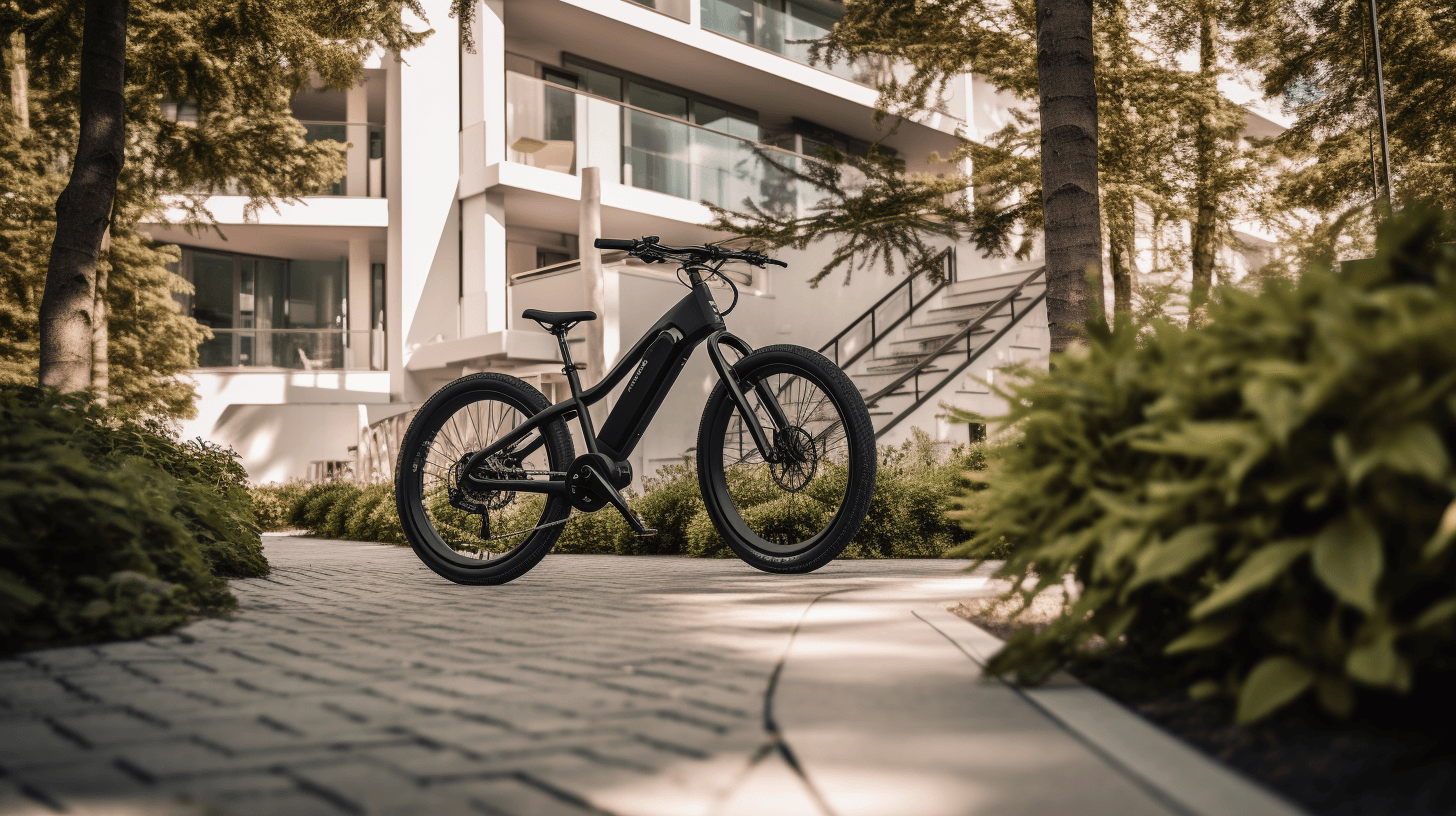The Evolution of Electric Bike Technology
Electric bikes, or e-bikes, have come a long way since their early beginnings. Initially, e-bike technology was primarily focused on assisting cyclists struggling with steep hills or long distances. However, advancements in battery technology, motor efficiency, and overall design have transformed e-bikes into versatile machines suitable for various purposes, from daily commuting to off-road adventures. Today’s electric bikes are lightweight, powerful, and designed with user-friendly features, making them increasingly popular among a diverse range of riders.
Factors Driving E-Bike Popularity
There are several factors contributing to the growing popularity of electric bikes. The need for sustainable and environmentally friendly transport alternatives has led many to consider e-bikes as a viable option. Additionally, improvements in e-bike technology have made them more affordable and accessible to a wider audience. The rise of urbanization and traffic congestion in cities worldwide has also spurred interest in e-bikes as an efficient and convenient means of transportation. Lastly, the aging population and increased focus on health and well-being have encouraged people to seek out new ways of staying active, with e-bikes offering a low-impact and enjoyable form of exercise.
Understanding Electric Bikes: Components and Functionality
Key Components of an Electric Bike
An electric bike is a bicycle equipped with an electric motor, battery, and controller. The motor provides additional power to assist the rider in pedaling, making it easier to travel longer distances or tackle challenging terrains. The battery stores energy, which is used to power the motor. It can be charged using a standard electrical outlet, and the range of an e-bike varies depending on factors such as battery capacity, motor efficiency, and rider input. The controller regulates the amount of power delivered from the battery to the motor and typically offers multiple levels of assistance for riders to choose from, depending on their needs and preferences.
How Electric Bikes Work
Electric bikes work by providing varying levels of pedal assistance to the rider. When the rider pedals, a sensor detects the pedaling motion, and the motor engages to supply additional power. The amount of assistance provided by the motor depends on the level selected by the rider through the controller. Some e-bikes also have a throttle, which allows the rider to use the motor without pedaling. This feature can be particularly useful when starting from a standstill or navigating through congested areas.
Types of Electric Bikes for Every Rider
Pedal-Assist E-Bikes
Pedal-assist e-bikes, also known as pedelecs, are the most common type of electric bike. They provide assistance only when the rider is pedaling, and the level of support can be adjusted through the controller. Pedal-assist e-bikes are suitable for riders who want a natural cycling experience with the added benefit of motor assistance when needed.
Throttle-Based E-Bikes
Throttle-based e-bikes allow the rider to control the motor’s power without pedaling, similar to how a motorcycle or scooter operates. These e-bikes offer the convenience of being able to cruise without pedaling, making them suitable for those who may have mobility issues or simply prefer not to pedal all the time. However, it is essential to note that not all regions allow throttle-based e-bikes on bike paths or trails, so it is crucial to check local regulations.
Speed Pedelecs
Speed pedelecs are a category of high-performance e-bikes that can reach speeds of up to 28 mph (45 km/h) with pedal assistance. These e-bikes are designed for riders who want to travel faster and cover greater distances more efficiently. Speed pedelecs are particularly popular among commuters who want to reduce their travel time and arrive at their destination without excessive perspiration. However, due to their increased speed, speed pedelecs may be subject to different regulations and may require additional safety equipment, such as helmets or reflective clothing, depending on local laws.
The Environmental and Commuting Benefits of Electric Bikes
Reducing Carbon Footprint
Electric bikes play a significant role in reducing our carbon footprint by offering an eco-friendly alternative to traditional forms of transportation. E-bikes produce zero direct emissions and consume less energy than cars or motorcycles. By choosing to commute via an e-bike, individuals can actively contribute to reducing greenhouse gas emissions and help combat climate change.
Solving Traffic Congestion Issues
As urban areas continue to grow and develop, traffic congestion has become a major concern in many cities worldwide. Electric bikes can help alleviate this issue by providing a more efficient and space-saving mode of transportation. E-bikes require less space on the road and can easily navigate through congested areas, reducing the overall volume of traffic. Additionally, e-bikes can often be used on dedicated bike lanes and paths, further reducing the number of vehicles on the road.
E-Bikes as a Sustainable Transport Solution
Electric bikes have the potential to transform the way we commute and travel, promoting sustainable transport solutions in urban environments. By combining the benefits of traditional bicycles with the convenience of motor assistance, e-bikes offer an accessible and enjoyable form of transportation for people of all ages and fitness levels. The adoption of e-bikes can contribute to decreased reliance on fossil fuels, reduced traffic congestion, and improved air quality, making our cities cleaner, healthier, and more efficient places to live.
Electric Bikes and Their Impact on Health and Well-being
Encouraging Physical Activity
Although electric bikes offer motor assistance, riders still engage in physical activity by pedaling. E-bikes can encourage people who may not otherwise consider cycling due to health or fitness concerns to get back on the saddle and enjoy the benefits of regular exercise. The adjustable assistance levels of e-bikes allow individuals to tailor their riding experience to match their fitness capabilities, gradually increasing the level of exertion as they become more confident and comfortable.
Mental Health Benefits
Cycling, including riding an electric bike, has been shown to have positive effects on mental health. Engaging in physical activity can help reduce stress, anxiety, and depression by releasing endorphins – the body’s natural mood enhancers. Additionally, cycling allows individuals to spend time outdoors, enjoy fresh air, and connect with nature, further promoting mental well-being. By making cycling more accessible and enjoyable, electric bikes can help improve mental health for a wide range of individuals.
E-Bike Regulations and Safety Considerations
Local and International Laws
Electric bike regulations vary across countries and even within local jurisdictions. Riders need to familiarize themselves with the specific rules and requirements in their area, which may include restrictions on motor power, maximum assisted speed, or the use of throttle-based e-bikes on certain paths or trails. Some regions may also require e-bike riders to possess a valid driver’s license or adhere to specific safety guidelines, such as wearing helmets or reflective clothing.
Safe Riding Practices
As with any form of transportation, practicing safe riding habits is crucial for e-bike riders. Some essential safety tips include wearing a helmet, using lights and reflective gear for visibility, and obeying traffic rules and signs. E-bike riders should also be aware of their surroundings, anticipate potential hazards, and communicate their intentions to other road users. Maintaining your e-bike by regularly checking the brakes, tires, and battery is another essential aspect of ensuring a safe and enjoyable riding experience.
The Future of Electric Bikes and Their Role in Our Lives
Technological Advancements
Electric bike technology is continuously evolving, with innovations aimed at improving the riding experience and making e-bikes more efficient, user-friendly, and environmentally friendly. Some anticipated advancements include lighter and more powerful batteries, more efficient motors, integrated smart features, and the incorporation of renewable energy sources, such as solar panels, to extend e-bike range and reduce charging times.
Integration with Smart Cities
As urban planners and policymakers strive to create more sustainable and livable cities, electric bikes are poised to play a significant role in shaping the future of urban mobility. Smart cities, characterized by the integration of technology and data-driven solutions, are increasingly adopting e-bikes as part of their multi-modal transportation strategies. The growing popularity of e-bike sharing programs, the expansion of dedicated cycling infrastructure, and the development of policies that promote the use of e-bikes are all indicative of the growing recognition of electric bikes as a key component of our future transport systems.
Join the Electric Revolution and Stay Informed
Don’t miss out on the latest e-bike trends, technological advancements, and tips on electric biking. Subscribe to our newsletter and continue exploring our recommended articles to become an electric bike enthusiast. Together, let’s embrace the future of sustainable transport and revolutionize the way we commute.



